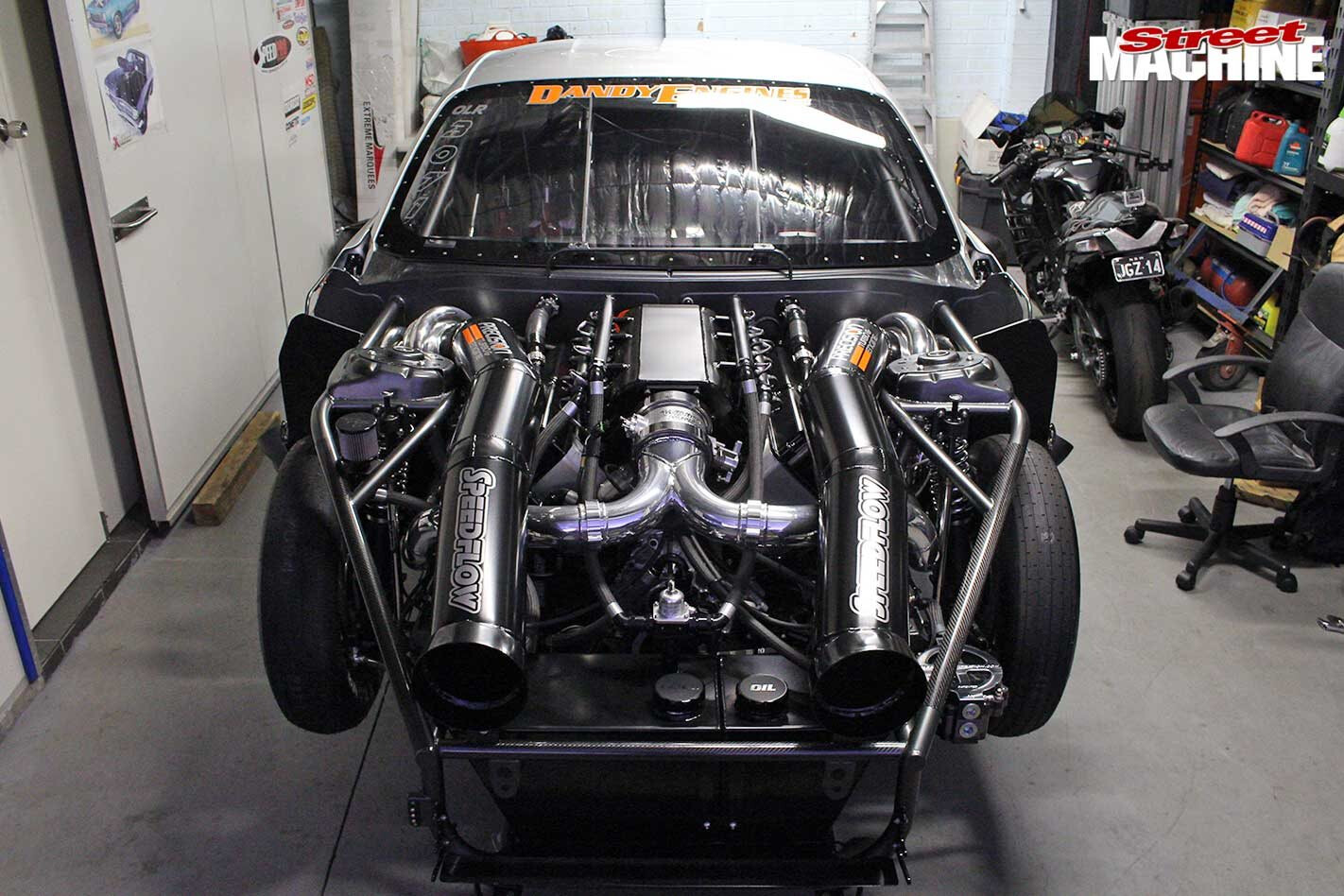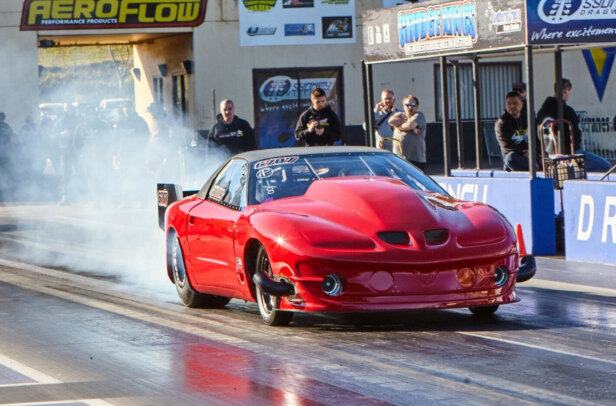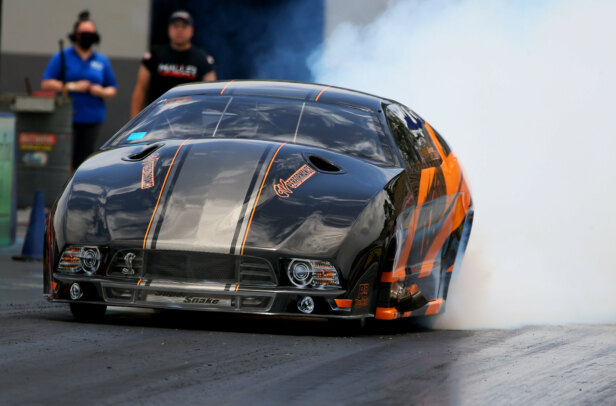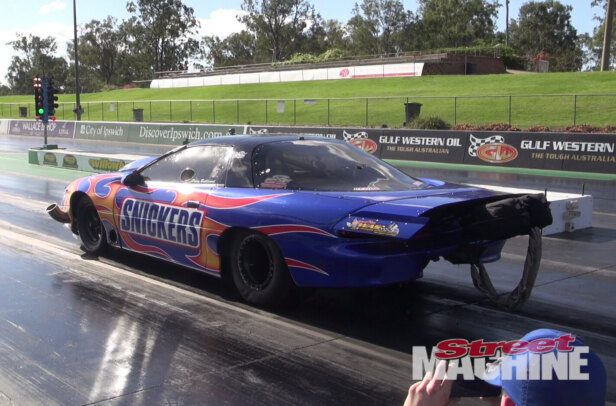THERE are plenty of fabrication shops around Australia that can turn out a killer race car. But when the guys at Profab Motorsport Fabrications, the Wollongong chassis and suspension shop responsible for the most cutting-edge radial cars of the past 10 years, decided to build a ride for themselves, it was always going to be state of the art.
This article was first published in the August 2019 issue of Street Machine
Take a good look at their 2016 Mustang. For radial fans, this car is a rolling wet dream! “We bought it a few years back, as we had clear plans of running into the threes over the eighth-mile and into the fives over the quarter,” says Profab boss Joe Gauci. “I had discussed motor combinations with Frank Marchese at Dandy Engines and the boys at Proline, and we decided that a 540ci 481X was really the right path to take for power and reliability.”
Other 481X-powered combinations Joe has worked on, like Steve Bezzina’s XW Falcon, have already run into the six-second zone in a full-weight sedan on leaf springs and a 275 tyre.
“We stripped it out, cut out all the floorpans and got stuck into building the chassis,” Joe says of the Profab ’Stang. “When it came to the chassis design, I’ve looked at most of the chassis shops in the States and the platform they use for Pro Mod cars, and built what I thought was the best version.
“We really got stuck into the chassis and didn’t take a break, working late every night, weekends and any chance we could to get it knocked out,” Joe continues. “Because it’s a late-model Mustang, there was very little available for it apart from doors, bonnet and bootlid. We needed a full-carbon interior and a carbon lift-off front, for example, and these parts just weren’t available.
“All the little jobs like window frames and door hinges really chewed up the time; even making the front end one piece using the factory panels was a big job. It needed to be strong enough to lift off in one piece and race with, and light enough to be practical.”
To ensure the car complied with IHRA rules, the front part of the chassis is still intact and the car retains the original strut tops for 10.5 rules. Joe needed to make all of this happen while still running a busy chassis shop.
A lightly used engine was sourced from the States and freshened by Frank Marchese at Dandy, backed by an M&M Transmission two-speed TH400, converter and shifter. A carbonfibre tailshaft runs back to a sheet-metal rear end built by Profab and fitted with a billet 10-inch centre from Tom’s Differentials. A Strange floater kit with Strange carbonfibre brakes complete the deal, with Jerry Bickel adjustable brackets and a Bickel anti-roll bar.
Cars of this nature seem to have a voracious appetite for chewing out the third member, and some Australian teams have been spending over $100K a year rebuilding them. The main reason for this is that most American cars run a 10-inch gear and these are not available in less than a 3.7 ratio. That’s fine if you are running over the eighth-mile, but if you want to run over the quarter you need a lower gearset, which means moving to a smaller crown wheel and pinion (9.5-inch), which is not nearly as durable.
In an age where everyone is making tons of grunt, shock selection plays a huge role in power management, and Joe has gone for Menscer four-way rear and two-way front shocks. The cost of these alone would represent a significant setback to most car builds.
The biggest issue for any high-powered radial car in Australia is track preparation. The Queensland Kenda meets appear to be at the forefront of radial prep in Australia, but in setting up a car the front-to-rear weight bias is crucial to getting off the startline. If you were racing in the States where the track prep is killer, you could go as far as 56 per cent front, but as the Profab Mustang has to race at all tracks here, Joe has worked on a 52 per cent front split, and at times will move to a 50/50 by adding rear ballast, depending on the track.
The motor itself is a stunning piece of engineering and remarkably reliable, built to handle over 85psi of boost. Equipped with twin 98mm Precision turbochargers, it’s a proven combination that can produce more than 3500hp.
Joe and his team did all the fabrication work, including the stunning four-into-one stainless headers with 2.5-inch primaries and 3.5-inch collectors. A pair of 60mm Precision wastegates complete the hot side. The intake is a Hogan sheet-metal item with a 105mm Wilson throttlebody, and fitted with 16 7000cc injectors.
The Mustang is fitted with a FuelTech ECU and all the bells and whistles, while swinging off the front of the engine is a belt-driven Waterman Big Bertha fuel pump and a four-stage oil pump for the dry-sump oiling.
“We are pretty fortunate that we already have a lot of tune-ups for this motor combination, and the boys from Proline have been out here throughout the build of the car and are working in closely with us,” Joe says. “It’s phenomenal what they are achieving on a 315 radial now, with cars running into the 3.60s. We have a long way to go, but our ultimate goal would be to head to the States.
“We are fortunate we get help from a lot of people like [driver] Carl Cox on board, Precision, Speedflow, Proline, Dandy and the team at FuelTech.”




Comments